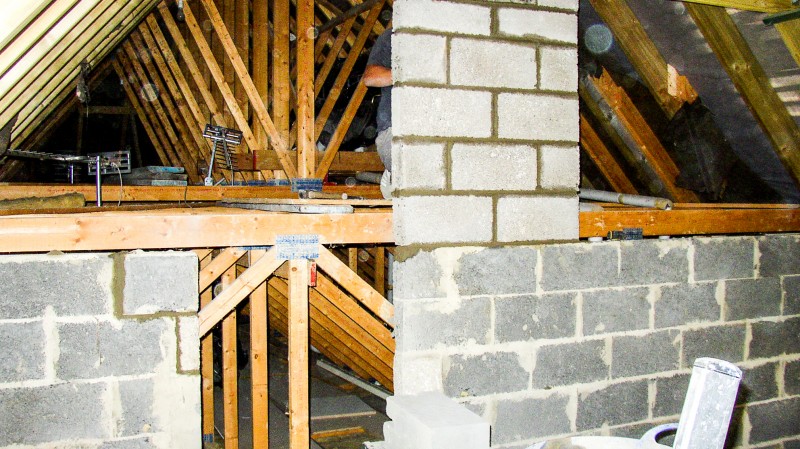You are here: What is a design and access statement?
Red tape or a key document to win planning permission?
What is a design and access statement?
A Design and Access Statement (DAS) is among the paperwork you may come across on your home extension journey. It’s meant to be a concise document that accompanies and supports certain planning applications. The idea is to explain the design, how it came about and what you’re trying to achieve.
While it may seem like more red tape, the statement helps local planning officers to better understand the design which in turn helps negotiations and decision making. A good DAS should increase support for your proposal.

When is a Design and Access Statement required?
Typically, a DAS is only required for major developments, such as new housing estates. But local planning authorities also require them for some smaller schemes in special character areas, such as a replacement build or large home extension in a conservation area, World Heritage Site, Area of Outstanding Natural Beauty or Site of Special Scientific Interest.
Applications for listed building consent must also include a DAS. It may also be useful to submit one to make the case for a project, for example a contemporary design in a street of traditional Victorian terraces. In addition to national policy, local authorities have their own guidelines, so the requirements can vary from area to area.
The statement needs to explain the merits of the design and how it relates to the local setting. It should include a written description and justification of the planning application. Sometimes photos, maps and drawings may be needed to further illustrate the points made. The document needs to be brief and readable, so avoid jargon.
“The level of detail in a design and access statement should be proportionate to complexity of the application but should not be long. For more straightforward planning applications, the DAS may only need to be a page long.”
Source: The Planning Portal.
Some local authorities provide a template/ form to be filled (several pages long) while others have guidelines for writing a DAS with a list of topics to be covered. Make sure your design and access statement is included within the fee of the architect working on your planning application – both full and outline. In complex cases, your architect may suggest hiring a planning consultant to write the DAS.
What information should be included in a design and access statement?
A design and access statement should include the following information:
Site appraisal
- Demonstrate you have looked at the context of the site and its surroundings. Describe the existing buildings: key features, character, age, condition and any previous alterations.
- Analysis of the site: size, flat or sloped, access routes, boundaries such as fences or hedges and any other notable features, for example large trees.
Proposed site layout
- Explanation of the design principles and concepts behind the scheme.
- Explain why the layout has been chosen and how it will fit its surroundings. How the buildings and open spaces, including the garden, work together.
Proposed building/extension
- Scale of existing and proposed buildings. Note any increase in size and footprint. The statement should show how the scheme is appropriate and won’t unduly dominate the space.
- Description of the proposed development; the materials and architectural style.
- Explain the design rationale behind the overall visual impact of the scheme and how it will relate to the surrounding area.
- Views and privacy. Demonstrate it won’t block daylight from the windows of neighbouring properties. Possible overlooking/loss of privacy should be considered too.
- Impact of proposed landscaping. It should be noted where natural features, for example trees, will be removed/retained and any mitigation work if appropriate.
- Explanation of how the local context has influenced the design.
- Private garden space. The proposals should leave sufficient usable garden as well as parking provision.
- Details of the proposed access, both vehicular and pedestrian access to the site and buildings. Demonstrate how it will allow inclusive access, including disabled.
Environment and sustainability
- Environmental considerations should be addressed with respect to the sourcing and maintenance of materials, orientation of the building and natural light.
- Details of energy efficient design, including insulation and energy-saving tech – everything from rainwater harvesting to solar PV panels.
- Flood risk. This information can be obtained from the Environment Agency. Potential contamination of the land should also be addressed.
- The presence of any large trees within felling distance of the development proposal. A separate, arboricultural report may be required. All trees with a diameter of 75mm or more in conservation areas are protected as are those covered by a Tree Preservation Order (TPO).
Planning policy and conclusions
- This section should demonstrate that all relevant planning policy has been considered, for example, Local Plan, Neighbourhood Plan, Conservation Area. It should also note the site’s previous planning history.
- Note the involvement of neighbours and other groups who have been or will be consulted, for example the local parish council, conservation officers or Highways Department, and the impact of any points raised on shaping the proposals.
- Conclude with final comments in favour of the scheme
For developments that involve a listed building, the DAS should also include an explanation of the historical and architectural importance of the listed building and how it has been considered in the new design, especially the physical features and settings.
“The most important message to get across is that the application is based on a good understanding of the local character and circumstances. That means a good statement will explain the design process that has been followed,” according to the Design Council guidelines.
If you are looking to make some home improvements, you may find some of these services useful
Builders
Find local help with a building project
Building Regulations
Find details of local experts who can help with Building Regulations
Architectural Design Services
Find local Architectural Design experts
Structural Inspections
Find an expert to carry out a structural inspection
Building Surveys
I want a local surveyor to do a Building Survey for me
Choose which Architectural service you require
If you are not sure which service you require, check out the options available...


